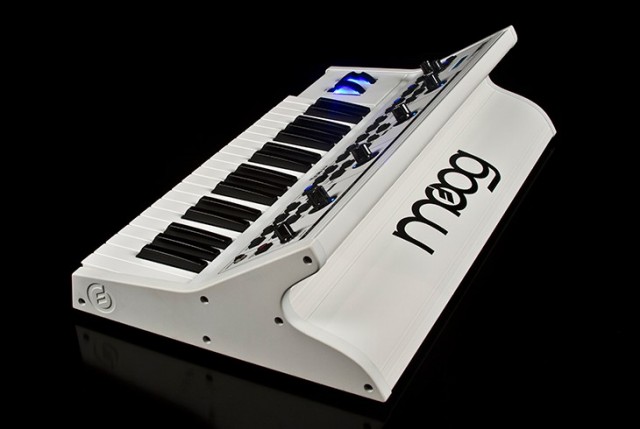What an extraordinary time of transformation it’s been in music instruments – one which has coincided unintentionally with the development of this site.
When the Little Phatty first hit the market in 2006, it really was a very different era. While Moog Music had already shipped the Voyager and brought back Bob Moog’s name to their products, the market was dominated by digital instruments and in particular big workstations.
Now, a whole lot of keyboards follow the path established by the Little Phatty: provide affordable instruments for musicians, use analog circuitry, embrace the monosynth, adopt one-to-one control of parameters. It’s remarkable, too, as we await the latest Apple press event, that the same “post-PC” era that heralded iPhone and iPad would also bring a massive expansion of interest in analog and vintage synthesizer design and aesthetics and tangible control. In a perfect marriage of digital and analog, the growth of the Web and social media helped fuel a global interest in instruments that continued a long-standing electronic tradition.
You can quantify that transformation. Moog Music is on a roll as one of the fastest-growing private companies in America:
Moog Earns Position On Prestigious Inc. 5000 List For 3rd Year In A Row
Inc.com Profile: Moog Music
We’re not talking huge business here – US$10 million in 2012 revenue – but the pace of growth and health of the business is impressive. And then you add in the qualitative – an incalculable impact on music and popular culture.
Moog announced this month that they’re discontinuing the Little Phatty, having completed a seven year production run. (For the record, it’s now the Stage II iteration, following the Tribute and original Stage.) The Slim Phatty, for now, is still available, as is the new Sub Phatty.
They’re marking the occasion with a fascinating behind-the-scenes video as they reminisce about the product that would specifically celebrate Bob Moog’s legacy, as the last major product in which he was closely involved. They also go into some great anecdotes about the instrument’s design, and that infamous name (which has grown on us). And I’m glad they didn’t put “phat” on one of the knobs, and that no one uses that word any more. It’s clearly a bittersweet moment for them, but a great moment for anyone who cares about synths. And I can imagine some smiles from other synth designers even beyond Moog – we’re fortunate that Moog and Little Phatty helped blaze a trail for so many more hardware instruments and synth creations.
You can read some of our coverage from way back in 2006. Then-contributor Lee Sherman did an exclusive for CDM in March 2006:
Moog’s New Little Phatty: Inside Details Revealed, Pricing $1000-1500
And Retro Thing founder James Grahame, who would later partner with CDM as the designer of our MeeBlip monosynth, talked to Mike Adams about the synth’s genesis:
A Magnificent New Moog Synthesizer
James nailed the analysis, I think – and even correctly suggested the cheeky name would fit well with the Moog Music ethos:
Once you get past the name, you’ll discover a very cool little analog monosynth designed by the master himself. Bob Moog’s analog audio synthesis circuits have been melded with a decidedly modern digital front panel that features four rotary encoders, 100 programmable memories and a plethora of nice-looking blue backlit buttons. My verdict: fantastic design with a cheeky name (which fits well with their Moogerfooger effects line).
I know it’s an end of an era for Moog, but it hardly feels that way: plenty of Little Phattys abound, the era the Little Phatty launched is only just getting into gear for synth players, and I’m sure we’ll see what’s next from Asheville soon.
In the meantime, what a milestone.
Moog Announces Discontinuation of Little Phatty Analog Synthesizer
Updated: for more reminiscing, here’s Experimental Synth with Little Phatty:
